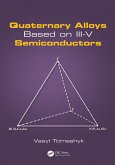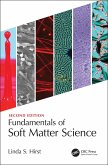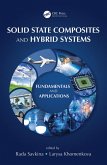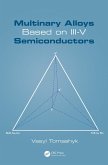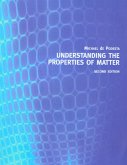Praveen Chaddah
First Order Phase Transitions of Magnetic Materials (eBook, PDF)
Broad and Interrupted Transitions
51,95 €
51,95 €
inkl. MwSt.
Sofort per Download lieferbar

26 °P sammeln
51,95 €
Als Download kaufen

51,95 €
inkl. MwSt.
Sofort per Download lieferbar

26 °P sammeln
Jetzt verschenken
Alle Infos zum eBook verschenken
51,95 €
inkl. MwSt.
Sofort per Download lieferbar
Alle Infos zum eBook verschenken

26 °P sammeln
Praveen Chaddah
First Order Phase Transitions of Magnetic Materials (eBook, PDF)
Broad and Interrupted Transitions
- Format: PDF
- Merkliste
- Auf die Merkliste
- Bewerten Bewerten
- Teilen
- Produkt teilen
- Produkterinnerung
- Produkterinnerung

Bitte loggen Sie sich zunächst in Ihr Kundenkonto ein oder registrieren Sie sich bei
bücher.de, um das eBook-Abo tolino select nutzen zu können.
Hier können Sie sich einloggen
Hier können Sie sich einloggen
Sie sind bereits eingeloggt. Klicken Sie auf 2. tolino select Abo, um fortzufahren.

Bitte loggen Sie sich zunächst in Ihr Kundenkonto ein oder registrieren Sie sich bei bücher.de, um das eBook-Abo tolino select nutzen zu können.
This book introduces new concepts in the phenomenon of 1st order phase transitions. It discusses the concept of kinetic arrest at a certain temperature, with this temperature being dependent on the second control variable (magnetic field, or pressure). It discusses interesting manifestations of this phenomenon when the 1st order transition is broadened, i.e. occurs over a finite range of temperatures. Many examples of this phenomenon, observed recently in many materials, will also be discussed.
- Geräte: PC
- mit Kopierschutz
- eBook Hilfe
- Größe: 6.93MB
Andere Kunden interessierten sich auch für
![Quaternary Alloys Based on III-V Semiconductors (eBook, PDF) Quaternary Alloys Based on III-V Semiconductors (eBook, PDF)]() Vasyl TomashykQuaternary Alloys Based on III-V Semiconductors (eBook, PDF)46,95 €
Vasyl TomashykQuaternary Alloys Based on III-V Semiconductors (eBook, PDF)46,95 €![Fundamentals of Soft Matter Science (eBook, PDF) Fundamentals of Soft Matter Science (eBook, PDF)]() Linda S. HirstFundamentals of Soft Matter Science (eBook, PDF)88,95 €
Linda S. HirstFundamentals of Soft Matter Science (eBook, PDF)88,95 €![Solid State Composites and Hybrid Systems (eBook, PDF) Solid State Composites and Hybrid Systems (eBook, PDF)]() Solid State Composites and Hybrid Systems (eBook, PDF)46,95 €
Solid State Composites and Hybrid Systems (eBook, PDF)46,95 €![An Introduction to Graphene and Carbon Nanotubes (eBook, PDF) An Introduction to Graphene and Carbon Nanotubes (eBook, PDF)]() John E. ProctorAn Introduction to Graphene and Carbon Nanotubes (eBook, PDF)46,95 €
John E. ProctorAn Introduction to Graphene and Carbon Nanotubes (eBook, PDF)46,95 €![Multinary Alloys Based on III-V Semiconductors (eBook, PDF) Multinary Alloys Based on III-V Semiconductors (eBook, PDF)]() Vasyl TomashykMultinary Alloys Based on III-V Semiconductors (eBook, PDF)46,95 €
Vasyl TomashykMultinary Alloys Based on III-V Semiconductors (eBook, PDF)46,95 €![Understanding the Properties of Matter (eBook, PDF) Understanding the Properties of Matter (eBook, PDF)]() Michael de PodestaUnderstanding the Properties of Matter (eBook, PDF)62,95 €
Michael de PodestaUnderstanding the Properties of Matter (eBook, PDF)62,95 €![Topics in the Theory of Solid Materials (eBook, PDF) Topics in the Theory of Solid Materials (eBook, PDF)]() J. M. VailTopics in the Theory of Solid Materials (eBook, PDF)68,95 €
J. M. VailTopics in the Theory of Solid Materials (eBook, PDF)68,95 €-
-
-
This book introduces new concepts in the phenomenon of 1st order phase transitions. It discusses the concept of kinetic arrest at a certain temperature, with this temperature being dependent on the second control variable (magnetic field, or pressure). It discusses interesting manifestations of this phenomenon when the 1st order transition is broadened, i.e. occurs over a finite range of temperatures. Many examples of this phenomenon, observed recently in many materials, will also be discussed.
Dieser Download kann aus rechtlichen Gründen nur mit Rechnungsadresse in A, B, BG, CY, CZ, D, DK, EW, E, FIN, F, GR, HR, H, IRL, I, LT, L, LR, M, NL, PL, P, R, S, SLO, SK ausgeliefert werden.
Produktdetails
- Produktdetails
- Verlag: Taylor & Francis eBooks
- Seitenzahl: 173
- Erscheinungstermin: 22. November 2017
- Englisch
- ISBN-13: 9781498786263
- Artikelnr.: 50404224
- Verlag: Taylor & Francis eBooks
- Seitenzahl: 173
- Erscheinungstermin: 22. November 2017
- Englisch
- ISBN-13: 9781498786263
- Artikelnr.: 50404224
- Herstellerkennzeichnung Die Herstellerinformationen sind derzeit nicht verfügbar.
Praveen Chaddah joined BARC through their Training School, in 1973. His Ph D work involved setting up a Compton Profile Spectrometer with a ¿-ray source (the 1st in India) for electron momentum density measurements. His work focused on electron states in structurally disordered materials, and on electron correlation effects. As a post-doc at University of Illinois at Urbana- Champaign, he initiated measurements of nuclear momentum densities in the quantum solid 4He, using the spallation neutron source IPNS at Argonne. Dr Chaddah also worked on correlating the superconducting and martensitic transitions in A-15 superconductors. He worked on the development of superconducting magnets and of multifilamentary NbTi wires at BARC during 1982-87, and later made important contributions to the development and extension of Bean's Critical State model for the high TC superconductors. He reformulated this as a 'minimum flux-change' hypothesis, and contributed to its application to sample-shapes having finite demagnetization factor. He then worked on 1st order phase transitions in vortex-matter in superconductors, as also in magnetic materials. His recent emphasis has been on understanding metastabilities associated with supercooling and superheating, as also those associated with glass-like arrest of kinetics. His work showing tunability of coexisting phases in halfdoped manganites by varying the cooling field, was followed up on many materials exhibiting magnetic field induced first order transitions. This introduced the idea of "kinetic arrest" as a broad first order transition that is interrupted before completion. He developed the protocol CHUF (cooling and heating in unequal fields) that has provided rather visual evidence of kinetic arrest resulting in a glass-like arrested state. The observation of such behavior across magnetic 1st order transitions in various magnetic materials, where diffusive motions are not apparent, may lead to newer understanding of what causes glasses to form. Praveen Chaddah received the INSA Young Scientist medal in 1978, and the MRSI -ICSC Prize for Superconductivity in 1993. He is a Fellow of the Indian National Science Academy, a Fellow of the Indian Academy of Sciences, and also a Fellow of the National Academy of Sciences of India. He is also an elected Member of the Asia Pacific Academy of Materials. He has authored over 200 research papers.
He was the Director of the UGC-DAE Consortium for Scientific Research for over eight years, where he established internationally competitive facilities for experimental research that were open to researchers from universities across India. He retired from the Department of Atomic Energy in December 2013.
He was the Director of the UGC-DAE Consortium for Scientific Research for over eight years, where he established internationally competitive facilities for experimental research that were open to researchers from universities across India. He retired from the Department of Atomic Energy in December 2013.
1. Phase transitions and rigorous definitions
1. Phase transitions in Nature, and a meandering introduction
2. Introduction: back to basics
3. The Ehrenfest classification
1.3.1 First order transitions
4. Studying phase transitions with two control variables
5. Van der Waals gas as an exactly solvable model: isotherms and isobars
6. Metastable states across a phase transition: limitations of the
Ehrenfest classification.
References
2. Modern classification of phase transitions
1. First order transitions, and the rest
2. Metastable states are specific to first order transitions
3. Limits of metastability
4. Hysteresis across first order phase transitions
5. Metastable to stable transformations
6. First order phase transitions with two control variables
References
3. Defining characteristics of first order transitions.
4. Necessary and sufficient characteristics following the Ehrenfest
classification
3.1.1 Melting of the vortex lattice
5. Need for other characteristic tests beyond the Clausius-Clapeyron relation
6. Necessary and sufficient characteristics following the modern
classification
1. Hysteresis as an indicator
2. Hysteresis together with metastable to stable transformation
References
7. Metastable and 'arrested unstable' states across first order transitions
8. Conceptual difference between metastable and unstable states
9. Relaxation rates for metastable, and for arrested unstable, states
10. Manifestations of kinetic arrest in studies using two control variables
1. Temperature variations in various fields
2. The CHUF protocol
3. CHUF for supercooled states
4. Isothermal variations of field
References
11. Disorder-broadened transitions
1. Broadened supercooling and superheating bands
2. Kinetic arrest and interrupted transitions: tuning by cooling field
3. Kinetic arrest and interrupted transitions: isothermal variation of
field
4. The CHUF protocol
5. Measuring Tk(H) using CHUF
6. What causes kinetic arrest?
References
Subject Index
1. Phase transitions in Nature, and a meandering introduction
2. Introduction: back to basics
3. The Ehrenfest classification
1.3.1 First order transitions
4. Studying phase transitions with two control variables
5. Van der Waals gas as an exactly solvable model: isotherms and isobars
6. Metastable states across a phase transition: limitations of the
Ehrenfest classification.
References
2. Modern classification of phase transitions
1. First order transitions, and the rest
2. Metastable states are specific to first order transitions
3. Limits of metastability
4. Hysteresis across first order phase transitions
5. Metastable to stable transformations
6. First order phase transitions with two control variables
References
3. Defining characteristics of first order transitions.
4. Necessary and sufficient characteristics following the Ehrenfest
classification
3.1.1 Melting of the vortex lattice
5. Need for other characteristic tests beyond the Clausius-Clapeyron relation
6. Necessary and sufficient characteristics following the modern
classification
1. Hysteresis as an indicator
2. Hysteresis together with metastable to stable transformation
References
7. Metastable and 'arrested unstable' states across first order transitions
8. Conceptual difference between metastable and unstable states
9. Relaxation rates for metastable, and for arrested unstable, states
10. Manifestations of kinetic arrest in studies using two control variables
1. Temperature variations in various fields
2. The CHUF protocol
3. CHUF for supercooled states
4. Isothermal variations of field
References
11. Disorder-broadened transitions
1. Broadened supercooling and superheating bands
2. Kinetic arrest and interrupted transitions: tuning by cooling field
3. Kinetic arrest and interrupted transitions: isothermal variation of
field
4. The CHUF protocol
5. Measuring Tk(H) using CHUF
6. What causes kinetic arrest?
References
Subject Index
1. Phase transitions and rigorous definitions
1. Phase transitions in Nature, and a meandering introduction
2. Introduction: back to basics
3. The Ehrenfest classification
1.3.1 First order transitions
4. Studying phase transitions with two control variables
5. Van der Waals gas as an exactly solvable model: isotherms and isobars
6. Metastable states across a phase transition: limitations of the
Ehrenfest classification.
References
2. Modern classification of phase transitions
1. First order transitions, and the rest
2. Metastable states are specific to first order transitions
3. Limits of metastability
4. Hysteresis across first order phase transitions
5. Metastable to stable transformations
6. First order phase transitions with two control variables
References
3. Defining characteristics of first order transitions.
4. Necessary and sufficient characteristics following the Ehrenfest
classification
3.1.1 Melting of the vortex lattice
5. Need for other characteristic tests beyond the Clausius-Clapeyron relation
6. Necessary and sufficient characteristics following the modern
classification
1. Hysteresis as an indicator
2. Hysteresis together with metastable to stable transformation
References
7. Metastable and 'arrested unstable' states across first order transitions
8. Conceptual difference between metastable and unstable states
9. Relaxation rates for metastable, and for arrested unstable, states
10. Manifestations of kinetic arrest in studies using two control variables
1. Temperature variations in various fields
2. The CHUF protocol
3. CHUF for supercooled states
4. Isothermal variations of field
References
11. Disorder-broadened transitions
1. Broadened supercooling and superheating bands
2. Kinetic arrest and interrupted transitions: tuning by cooling field
3. Kinetic arrest and interrupted transitions: isothermal variation of
field
4. The CHUF protocol
5. Measuring Tk(H) using CHUF
6. What causes kinetic arrest?
References
Subject Index
1. Phase transitions in Nature, and a meandering introduction
2. Introduction: back to basics
3. The Ehrenfest classification
1.3.1 First order transitions
4. Studying phase transitions with two control variables
5. Van der Waals gas as an exactly solvable model: isotherms and isobars
6. Metastable states across a phase transition: limitations of the
Ehrenfest classification.
References
2. Modern classification of phase transitions
1. First order transitions, and the rest
2. Metastable states are specific to first order transitions
3. Limits of metastability
4. Hysteresis across first order phase transitions
5. Metastable to stable transformations
6. First order phase transitions with two control variables
References
3. Defining characteristics of first order transitions.
4. Necessary and sufficient characteristics following the Ehrenfest
classification
3.1.1 Melting of the vortex lattice
5. Need for other characteristic tests beyond the Clausius-Clapeyron relation
6. Necessary and sufficient characteristics following the modern
classification
1. Hysteresis as an indicator
2. Hysteresis together with metastable to stable transformation
References
7. Metastable and 'arrested unstable' states across first order transitions
8. Conceptual difference between metastable and unstable states
9. Relaxation rates for metastable, and for arrested unstable, states
10. Manifestations of kinetic arrest in studies using two control variables
1. Temperature variations in various fields
2. The CHUF protocol
3. CHUF for supercooled states
4. Isothermal variations of field
References
11. Disorder-broadened transitions
1. Broadened supercooling and superheating bands
2. Kinetic arrest and interrupted transitions: tuning by cooling field
3. Kinetic arrest and interrupted transitions: isothermal variation of
field
4. The CHUF protocol
5. Measuring Tk(H) using CHUF
6. What causes kinetic arrest?
References
Subject Index

